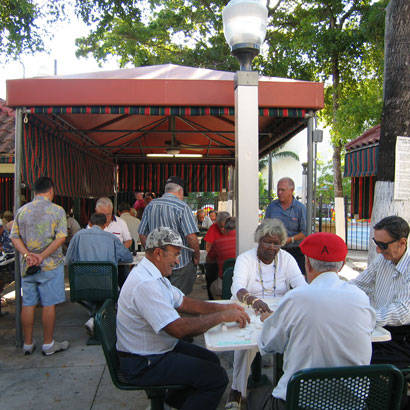
Worldwide, more people now live in urban versus rural areas. A fact that’s borne out in North America, where more than 80 percent of the population lives in urbanized areas. Public spaces, found in all types of settings, often provide important center points and democratic space for neighborhoods, particularly in areas where residents have less individual ownership. They can also give neighborhoods a unique identity and help create connections through “place attachment” — the strong, emotional bonds people form with their surroundings — that may motivate residents to stay in place as their income levels rise. Elements of the built environment influence place attachment, and the result of strengthening neighborhood ties and celebrating their unique identities produces stronger communities and cities.
As the rural-to-urban population shift continues, public spaces and urban parks may become the basis for how many urbanites experience nature. This was the motivating idea for a study of small urban spaces (3 acres or less) and what design principles make them successful. Small spaces in four types of communities were studied — including ultra-urban settings such as New York City; newer metropolitan cities such as Miami, Florida; older, slow growth and smaller cities such as Roanoke, Virginia; and the ubiquitous American small town, such as Niceville, Florida. A variety of parks, plazas and other types of public spaces were visited and park goers informally interviewed for a wide interpretation of how the spaces were used. Combining local knowledge, photographic documentation, observation, interviews and park histories yielded a better understanding of the individual spaces and their relationships to their community. From this study, five design principles were determined to provide the basic building blocks for a successful small park: accessibility, specificity, authenticity, adaptability and functionality. These elements, when combined, create a design framework for good small parks, regardless of setting, and were noticeably missing in less successful spaces.
Essential Elements of a Small Public Space
Accessibility is perhaps the most important element of a small public space. A small park should be a central part of a community and should be encountered in the course of a normal day’s routine. Locating parks on leftover parcels, private spaces or behind homes provides little relevance to their context or the overall community and can result in them being underutilized. Specificity means a site is specific to its location and users. It implies that a site possesses qualities that make it special and unique, and may come from a neighborhood’s ethnic or religious affiliation. Authenticity means a park is genuine, or “the real deal,” and must actually be the thing it is representing. Simply copying something successful from one area to another does not take into account a site’s authenticity. Adaptability in a park allows for upgrades, maintenance and change over time as the neighborhood’s needs evolve. Adaptability reflects the organic nature of public space. Functionality speaks to a park’s place in the urban fabric and provides opportunities for play, recreation, retreat and socializing in practical ways by providing activities a community wants.
Ultimately, providing good public space is about equity in the built environment — regardless of setting. Parks must be open to the public with no restrictions on race, gender, economic status, etc. However, interaction with nature has been especially challenging for residents of low-income urban communities that have lower rates of participation in nature-based recreation. This is due to the inaccessible locations of many parks and open areas. The ability to access neighborhood public spaces has a profound impact on the poor, those with limited mobility and children. Easily accessed, nearby public spaces are very important for such vulnerable populations who may not have a personal vehicle, a situation made even more acute in neighborhoods with few public transportation options. Studies have also shown that youth in low-income neighborhoods rely more heavily on local public spaces and use them more frequently than those in more affluent areas. Researchers found that despite their need, minority neighborhoods in Los Angeles had fewer than 2 acres of park space per 1,000 people, compared to more than 31 acres in white neighborhoods.
Nearby parks also lessen environmental justice issues by increasing neighborhood quality of life and aesthetics through positive contexts. The heat island effect (where heat is trapped by pavement and buildings, causing higher temperatures in urban areas) is stronger in neighborhoods with low tree canopy cover, and recent studies in Cleveland showed these were often poor and minority neighborhoods. Other research demonstrated the negative cumulative effects of overlapping environmental and social hazards experienced by vulnerable communities. These things highlight the ongoing issues of environmental and social justice and the need to locate parks near people, particularly in poor neighborhoods. An equitable provision of local parks is one way to lessen the disparity between wealthy and poor neighborhoods by enhancing neighborhood assets. Well-designed parks that are accessible, specific, authentic, adaptable and functional can provide social space and the yards and playgrounds children need to stimulate imaginative, creative play, while helping foster a more positive outlook on life. Therefore, planners and parks departments should determine where parks are missing within their communities, and develop plans to alleviate imbalances.
Note: This article is adapted from professor Currie’s 2017 article titled “A Design Framework for Small Parks in Ultra-Urban, Metropolitan, Suburban, and Small Town Settings,” published in volume (22)1 of The Journal of Urban Design.
Melissa A. Currie, Ph.D., RLA, is an Assistant Professor of Community Development at the University at Albany, State University of New York and a licensed landscape architect.

